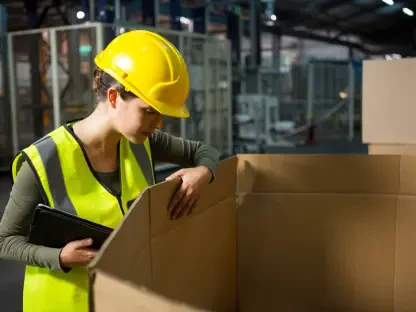In the fast-paced world of logistics and supply chain management, the foundation of any warehouse operation often lies beneath the feet of workers and machinery, where the flooring plays a pivotal role in ensuring efficiency and safety. A poorly chosen or maintained floor can lead to costly repairs, safety hazards, and operational downtime, while a well-selected surface can enhance productivity and withstand the rigors of heavy traffic and loads. Warehouse flooring is not merely a surface to walk on; it represents a critical investment that impacts everything from employee well-being to the longevity of expensive equipment. With the industry evolving rapidly, operators must stay informed about the best practices for selecting materials and designs that meet specific needs. This discussion dives into the key considerations for choosing durable flooring, drawing on expert insights to guide decision-making. From preparation to material selection, every aspect demands careful thought to create a robust and safe environment for warehouse activities.
Prioritizing Surface Preparation for Longevity
Thorough preparation of the surface before installing warehouse flooring stands as a cornerstone for ensuring long-term durability and performance in high-demand environments. Experts stress that skipping or rushing this step can result in severe issues such as bubbling, flaking, or even complete delamination of the floor, regardless of the quality of materials used. A detailed assessment of the existing substrate is essential, taking into account factors like moisture levels, contaminants, and previous coatings that might interfere with adhesion. Proper preparation often involves mechanical methods like grinding or shot blasting to create a clean, stable base. This process, while time-intensive, prevents premature failures that could disrupt operations and lead to expensive repairs. By investing in this initial stage, warehouse operators lay the groundwork for a floor that can endure the stresses of daily use, ensuring that the chosen materials perform as intended over many years of heavy activity.
Beyond the technical aspects, surface preparation also ties into cost-effectiveness and risk management for warehouse facilities. When the base is inadequately prepared, even the most advanced flooring solutions can fail under the weight of racking systems or the constant movement of forklifts. This not only jeopardizes the structural integrity of the floor but also poses safety risks to workers who rely on a stable surface to perform their tasks. Addressing potential issues like cracks or unevenness during preparation helps avoid future hazards that could lead to accidents or equipment damage. Furthermore, a well-prepared surface can enhance the bonding of coatings or materials, reducing the need for frequent maintenance and extending the lifespan of the installation. For operators, this translates into fewer interruptions and a more predictable budget for facility upkeep, making preparation a non-negotiable step in the journey toward a durable warehouse floor.
Enhancing Safety Through Functional Design
Safety remains a paramount concern in warehouse environments, where the risk of accidents can escalate due to high traffic and heavy machinery, making functional design an integral part of flooring selection. Clear and durable signage on the floor plays a vital role in minimizing these risks by guiding workers and equipment operators through critical areas. Incorporating color-coded tapes, anti-slip markings, and even glow-in-the-dark indicators for emergency exits or maintenance zones can significantly improve visibility. Such measures ensure that hazards are easily identifiable, even in low-light conditions or during peak operational hours. By integrating these elements into the flooring design, warehouses can create an intuitive safety system that reduces the likelihood of collisions or missteps, fostering a secure workplace where employees can focus on their tasks without unnecessary distractions or dangers.
Equally important is the selection of flooring materials that inherently support safety under varying conditions encountered in a warehouse setting. Surfaces with anti-slip properties or textured finishes can prevent falls, especially in areas prone to spills or wet conditions. Additionally, choosing flooring that withstands chemical exposure or temperature fluctuations ensures that safety features remain effective over time. These considerations are not just about compliance with regulations but also about protecting the workforce and maintaining operational flow. A floor that deteriorates quickly or fails to provide adequate grip can become a liability, leading to potential injuries and costly downtime. By prioritizing safety-focused design and materials, warehouse operators can address both immediate risks and long-term reliability, creating an environment where safety and efficiency coexist seamlessly to support daily operations.
Selecting Materials for Durability and Load Capacity
When it comes to withstanding the immense pressures of warehouse operations, the choice of flooring material becomes a defining factor in achieving durability and supporting heavy loads. Modern solutions like resin coatings have gained prominence for their exceptional strength, low maintenance needs, and ability to be customized to specific requirements. Unlike traditional options such as concrete or tile, resin floors offer superior resistance to wear and tear, making them ideal for environments with constant forklift traffic and heavy racking systems. These coatings also provide flexibility in terms of aesthetics and functionality, allowing for tailored solutions that meet both operational and compliance standards. Investing in such materials ensures that the floor can handle significant weights without cracking or degrading, providing a reliable foundation for years of intensive use in demanding settings.
Beyond the type of material, understanding the specific load-bearing demands of a warehouse is crucial for selecting a flooring solution that performs under pressure. Racking systems, stacked goods, and machinery can exert forces exceeding 100kN in some cases, requiring a floor that is precisely leveled and engineered to distribute weight evenly. Sustainable practices, such as incorporating advanced fiber technologies, can also enhance durability while reducing environmental impact. This balance of strength and eco-consciousness reflects a growing trend in the industry to align operational needs with broader sustainability goals. For warehouse operators, focusing on materials and designs that cater to these intense demands means fewer disruptions due to floor failures and a more efficient use of resources, ensuring that the chosen solution supports both current activities and future scalability without compromising on performance.
Reflecting on Strategic Flooring Decisions
Looking back, the journey of selecting durable warehouse flooring revealed a multifaceted challenge that demanded attention to preparation, safety, and material resilience. Each decision, from assessing the substrate to integrating safety markings, played a critical role in shaping a workspace that balanced efficiency with employee well-being. The insights gathered underscored that a robust floor was not just a physical asset but a strategic one, capable of reducing maintenance burdens and aligning with sustainability objectives. Moving forward, operators are encouraged to view flooring as a long-term investment, prioritizing thorough planning and expert consultation to tailor solutions to unique operational needs. By adopting this proactive approach, warehouses can transform potential vulnerabilities into strengths, ensuring that their foundations support growth and adaptability in an ever-evolving industry landscape.









